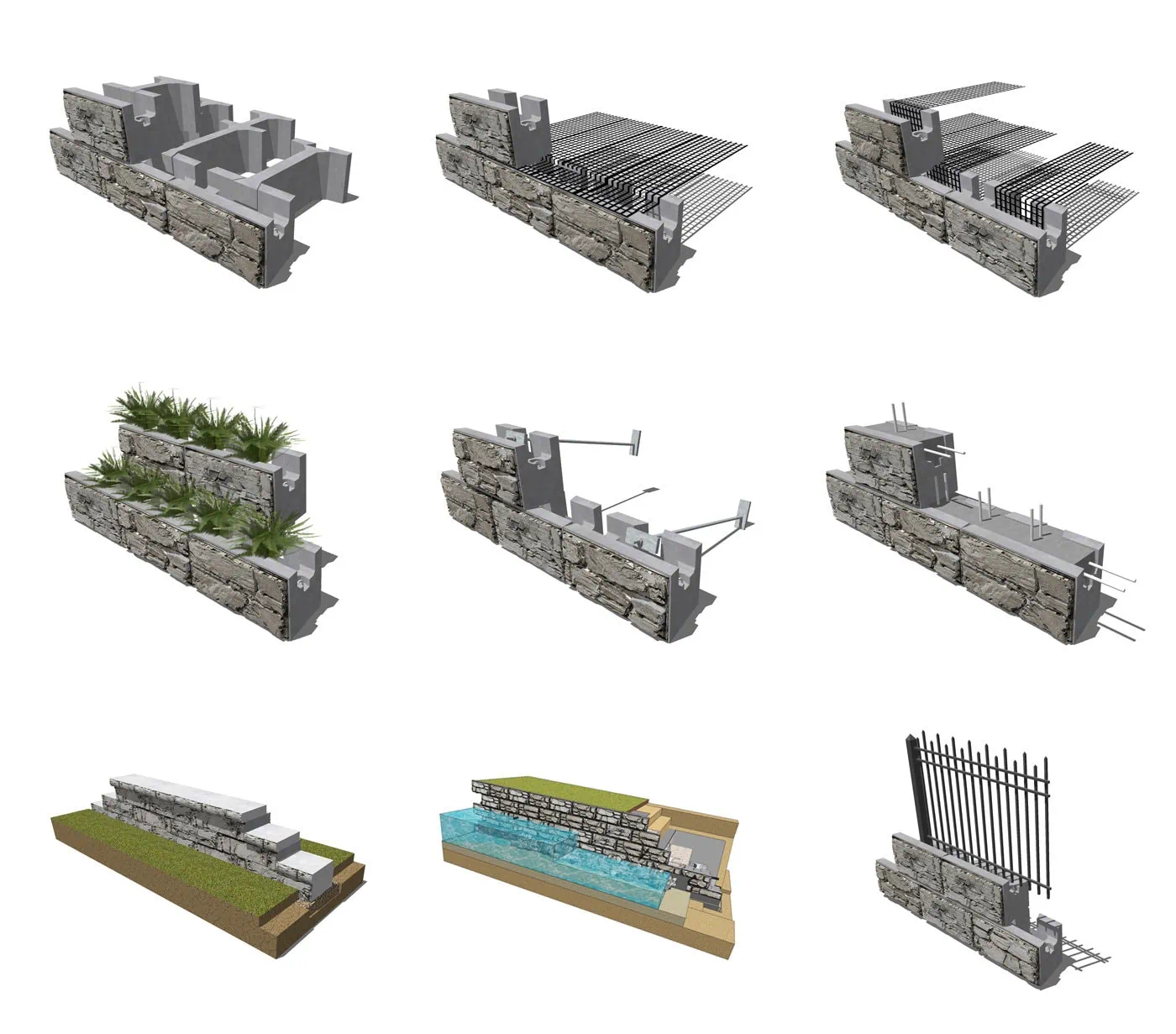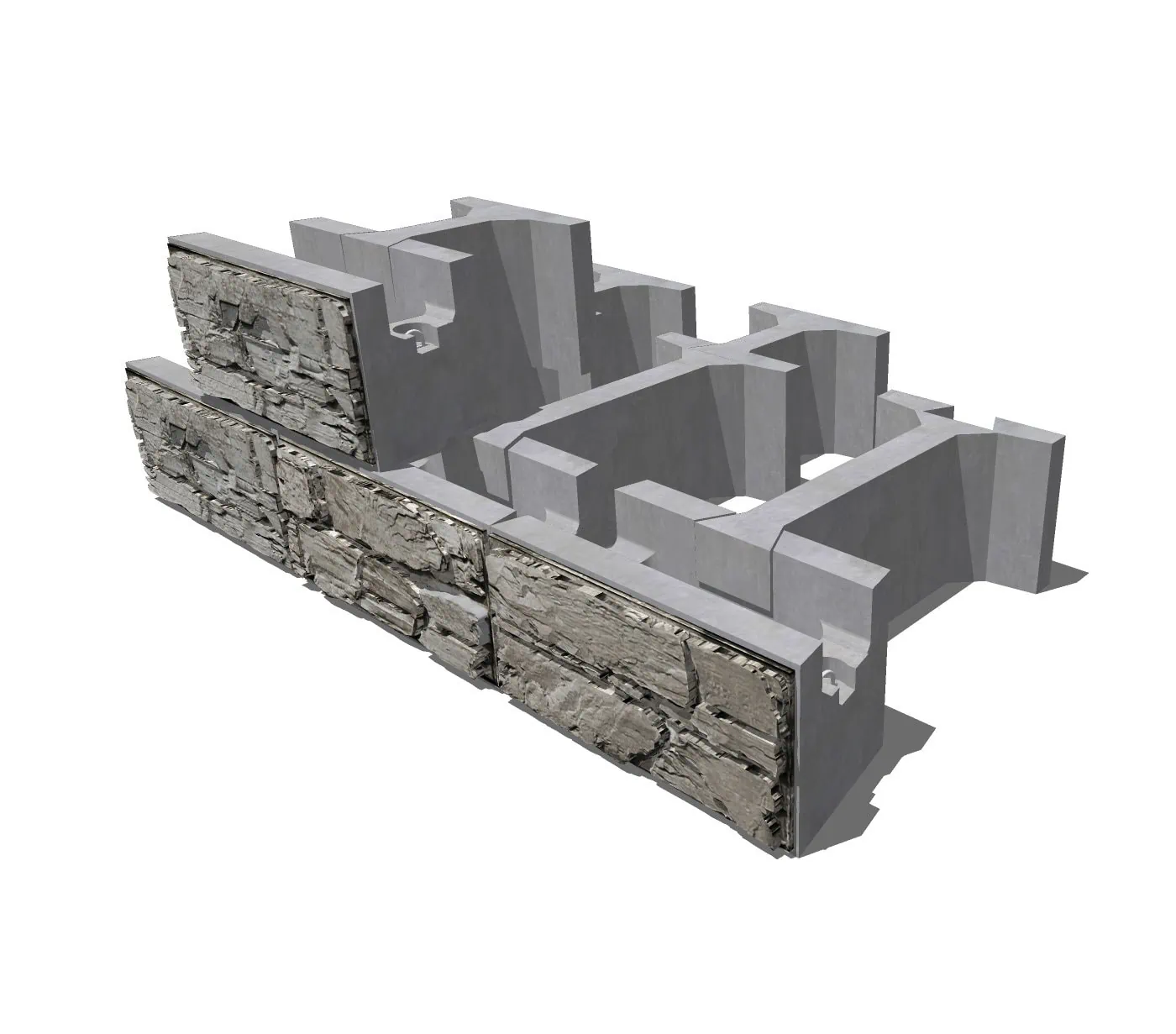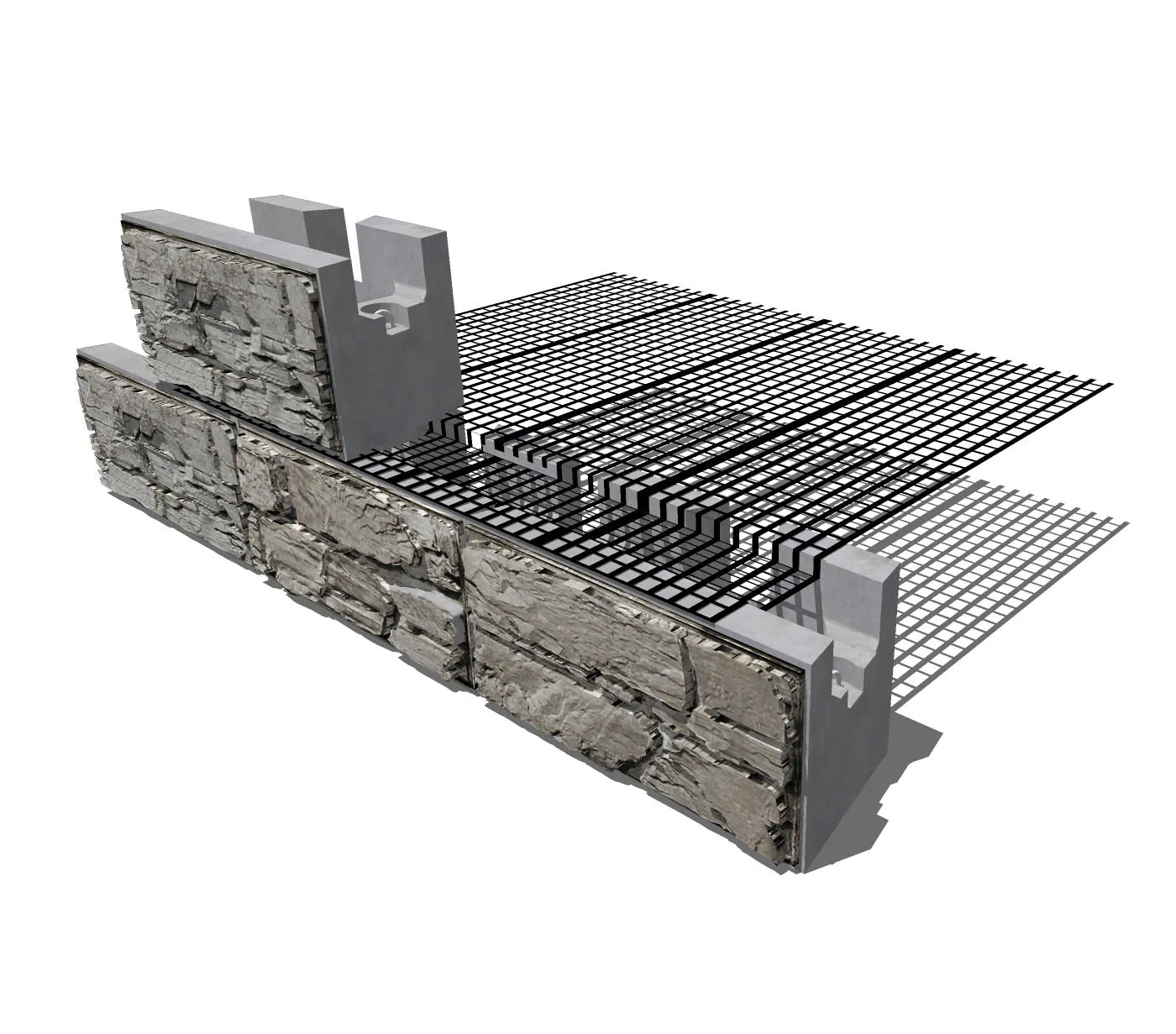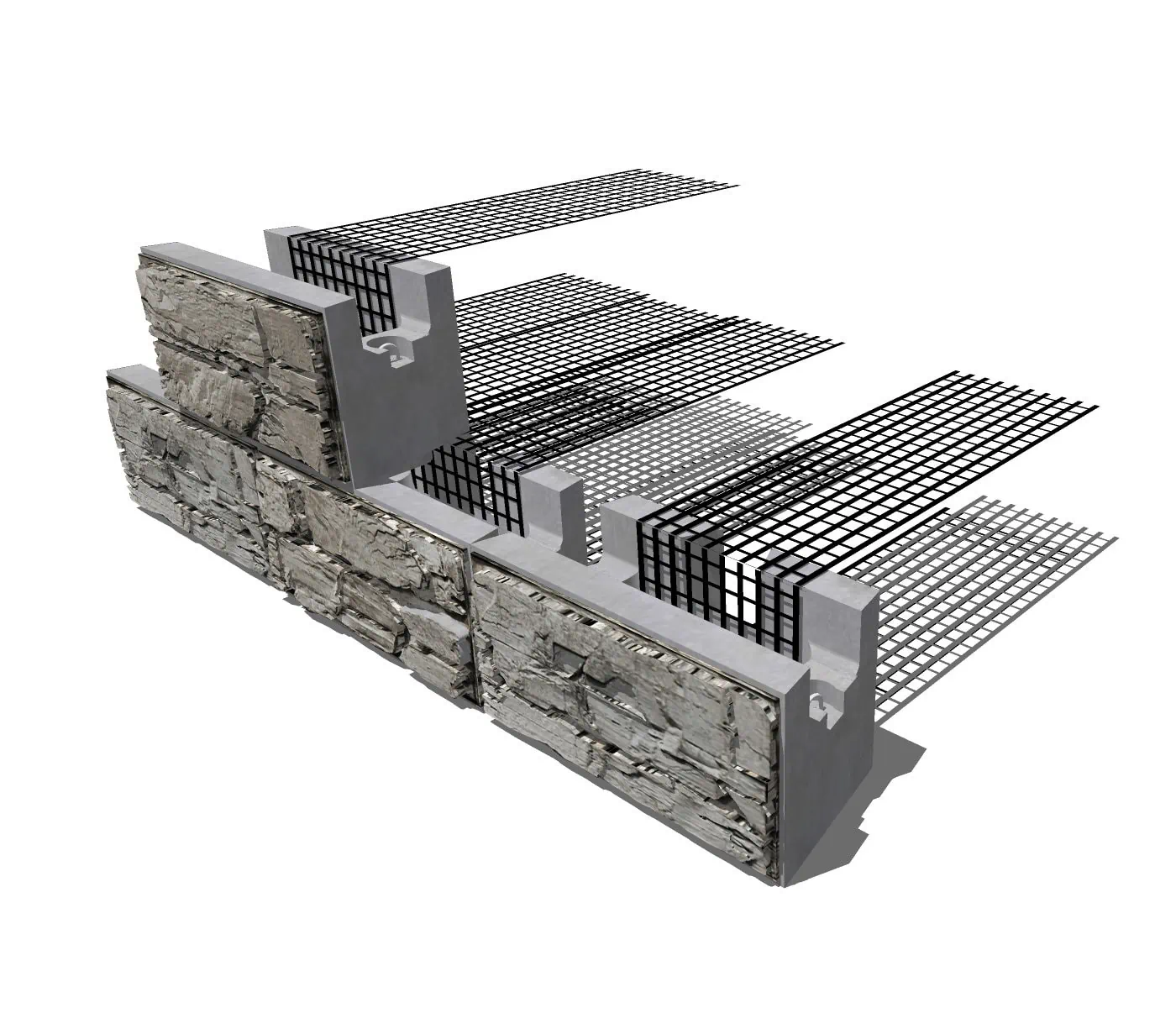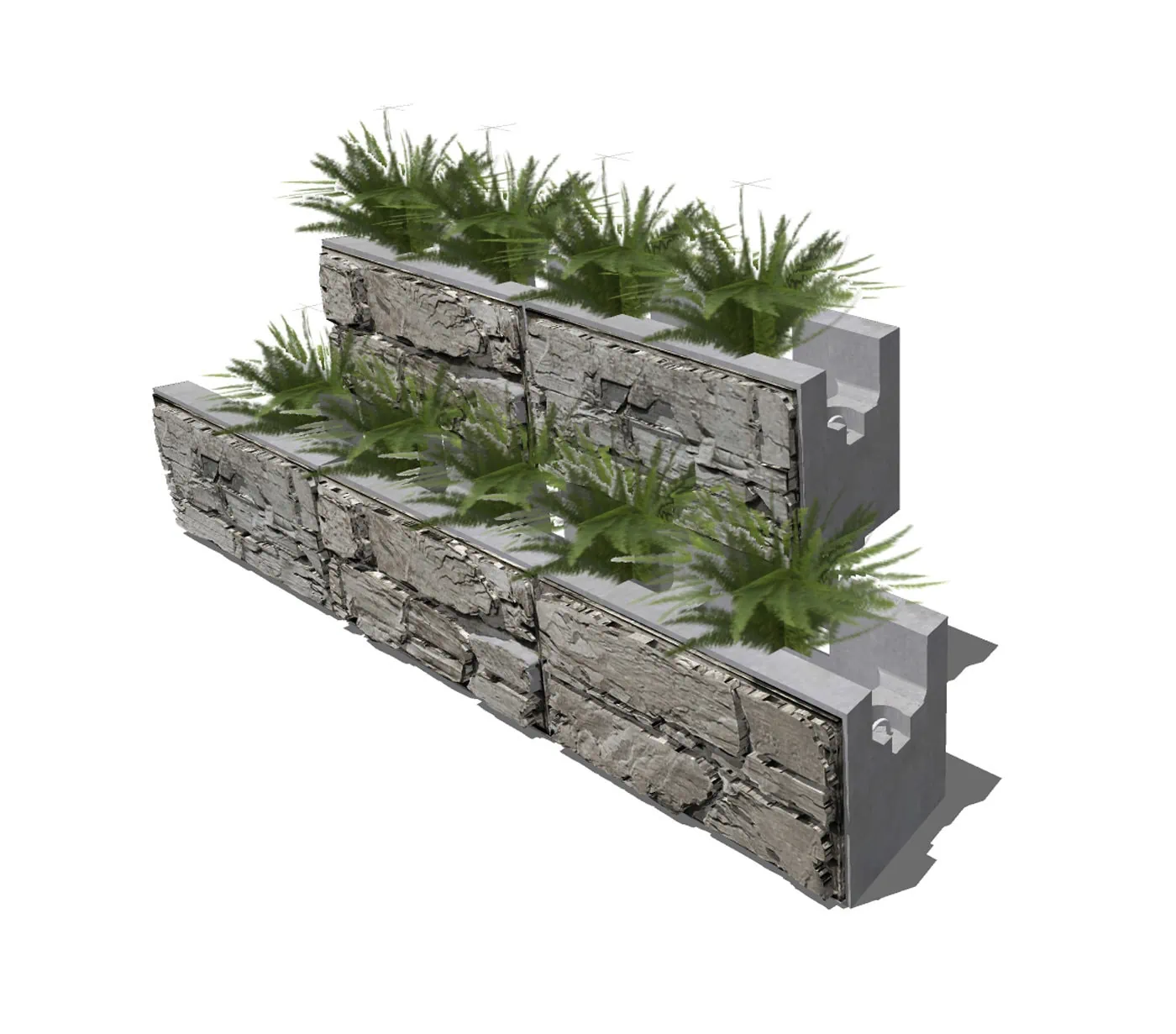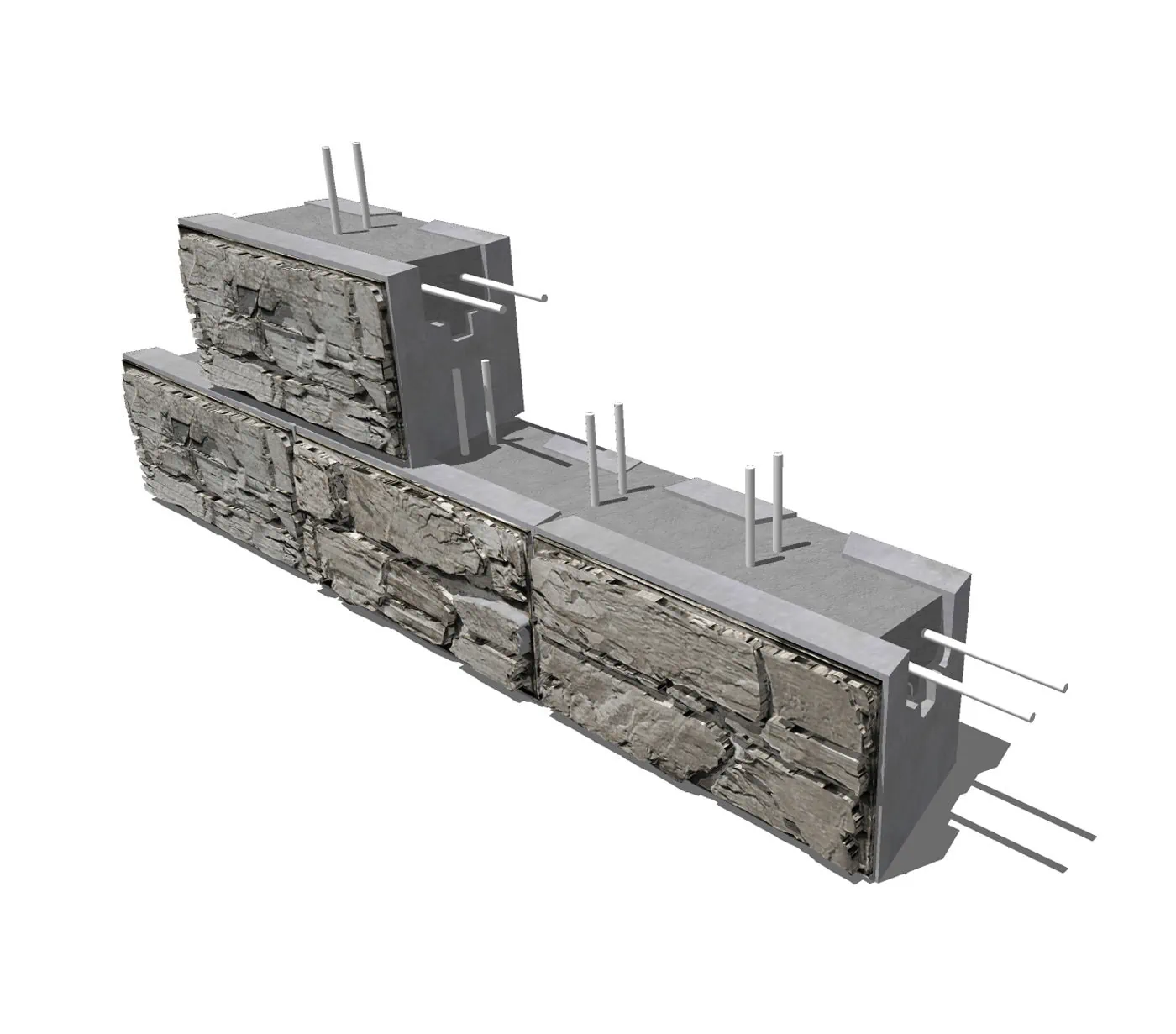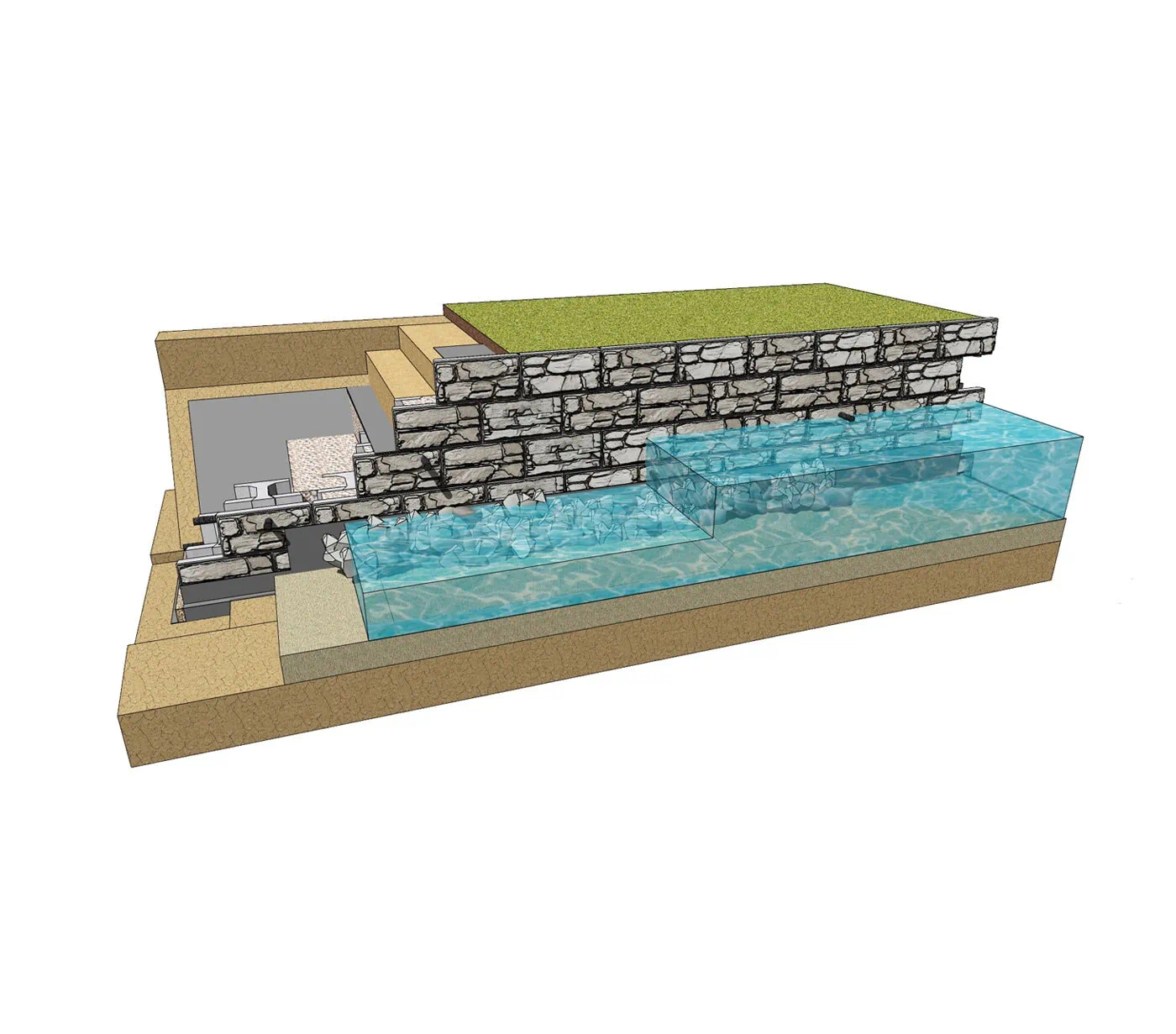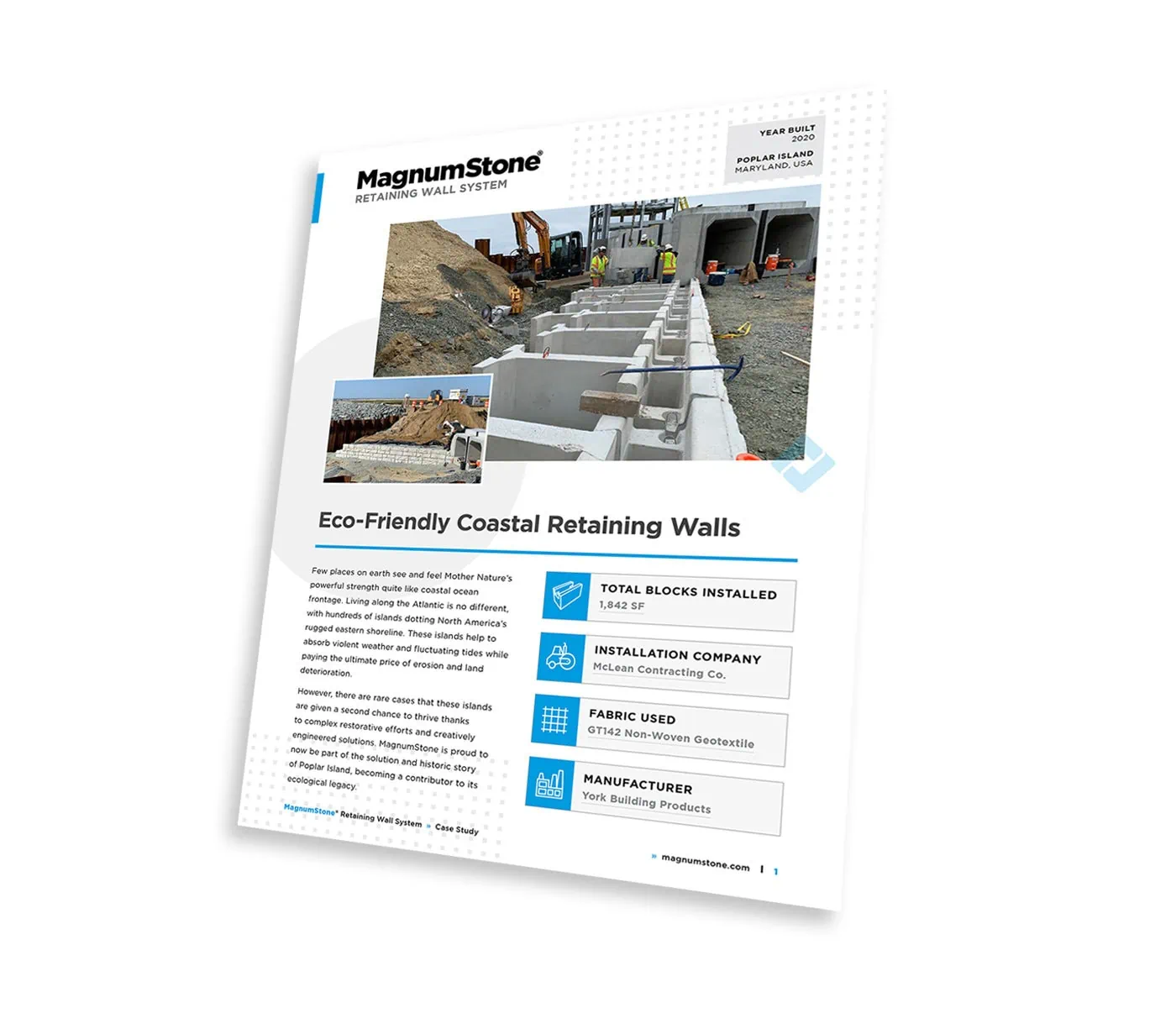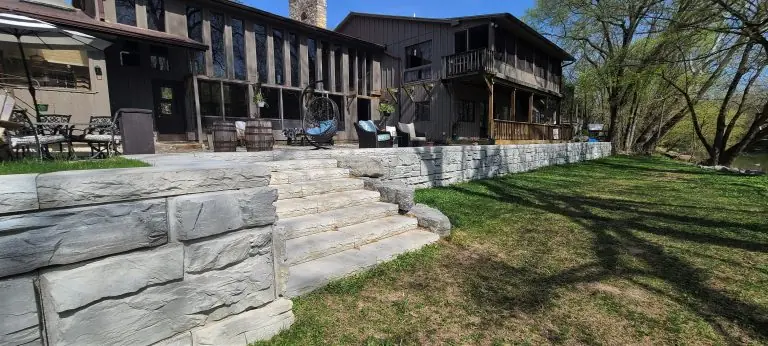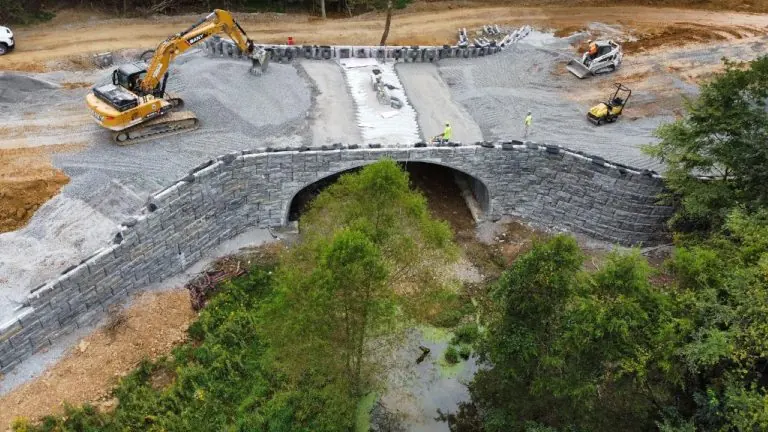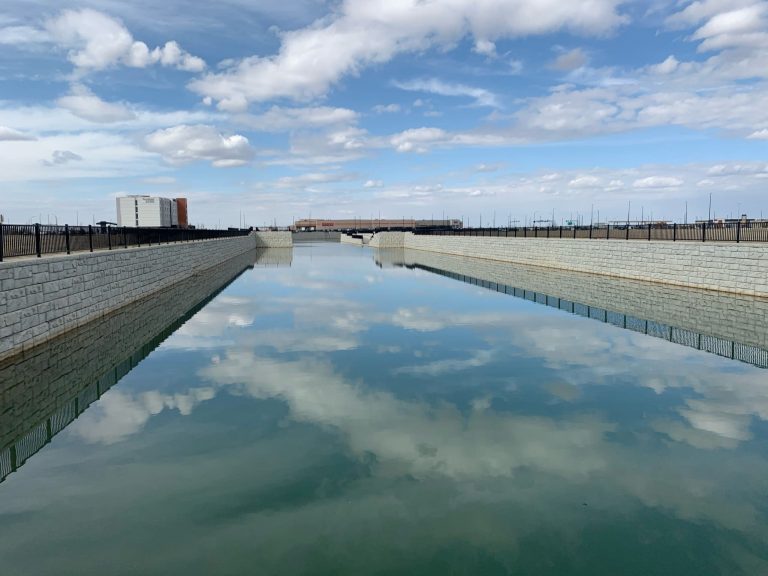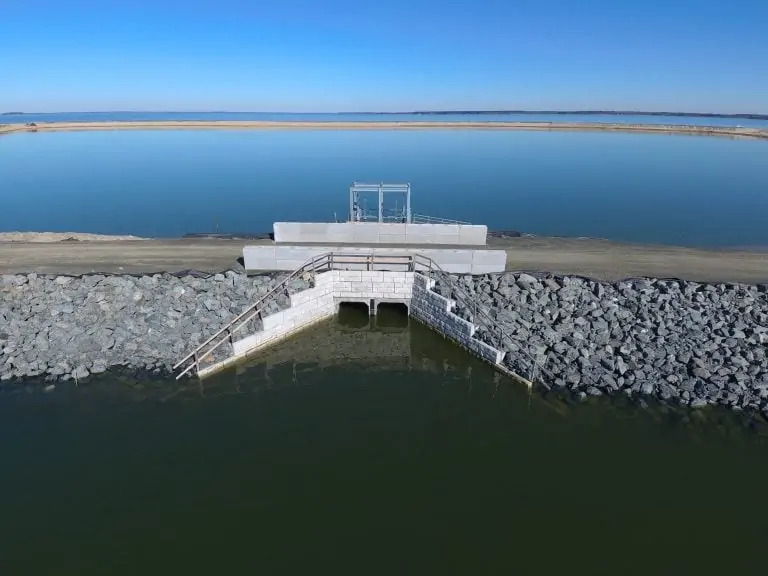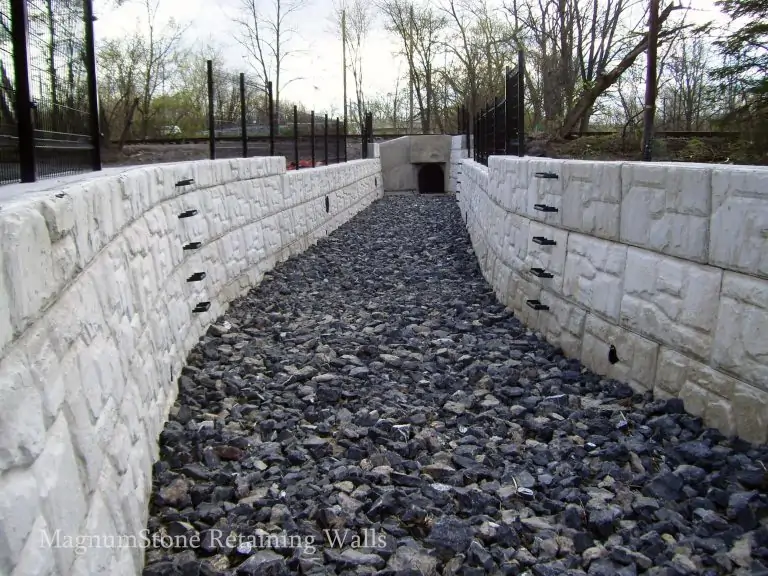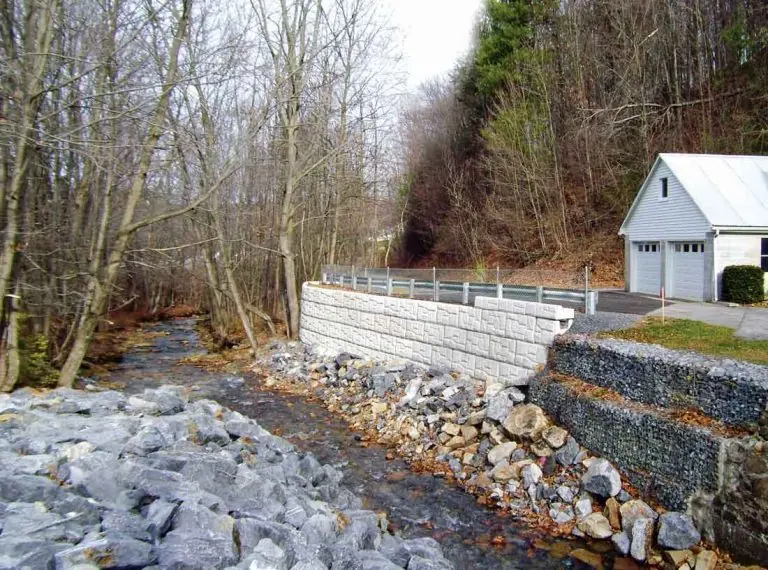Bioretention
Ponds, Rain
Gardens,
Bioretention
Basins
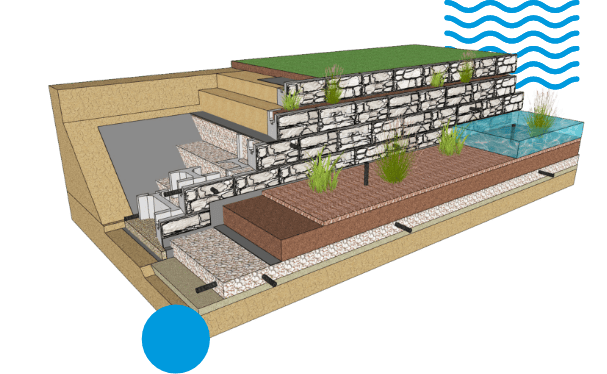
Environmentally friendly stormwater management solutions are in high demand to implement more sustainable ways of capturing and treating stormwater runoff. When it comes to filtering and treating stormwater, engineers have discovered bioretention ponds are among the most natural and effective processes.
Bioretention ponds are capable of safely removing pollutants, contaminants and harmful nutrients from stored infrastructure runoff. These low maintenance stormwater systems fit into small areas and provide flexible design and landscaping options to become aesthetically pleasing.
By capturing and treating runoff, these structures serve vital purposes to maintaining healthy ecosystems as humans continue urbanizing natural landscapes. Water treatment through these structures has a major impact on clean water for communities and preserving safe wildlife habitats.
Bioretention Solutions
These unique stormwater management systems, also known as rain gardens or bioretention basins, are carefully graded depressions with strategically designed layers. Water is evenly dispersed when it enters the bioretention area to moderate the flow, it then gradually collects below.
Retaining walls or graded land control the water flows and lead the stormwater to a shallow depression where it’s securely captured. Protective fabrics can be used to line the retaining wall, embankment and base of the pond to reduce erosion of the surrounding area. Bioretention ponds consist of multiple layers to appropriately filter and remove the water. These layers include gravel, mulch and soils that fill the depression and help filter contaminants.
These articulate systems often contain native vegetation that helps recycle nutrients and absorb water to aid the process of evapotranspiration. The top layer of the ponding area is generally mulch which serves as the first filter for runoff debris and pollutants. The soils below are engineered to promote stable growth of vegetation and continue to remove sediments from the water. Sand beds can be included for further filtration, and underdrain systems are often installed below.
As contaminants and sediments percolate, the clean water slowly drains from the area by infiltrating into the earth beneath. Depending on the design, treated water can be released into overflow inlets or storm drains. Retaining walls help guide and evenly distribute water into the bioretention system below, as MagnumStone’s hollow core design makes drainage simple and effective. Complemented by perforated drainpipes, they are perfectly designed for bioretention pond applications.
MagnumStone’s hollow core also provides a plantable retaining wall pocket within the retaining wall system. MagnumStone blocks can be constructed in a terraced layout, with soil and plants installed in the exposed hollow cores. These plantable walls merge perfectly as the sides of a rain garden that may be filled with plants.
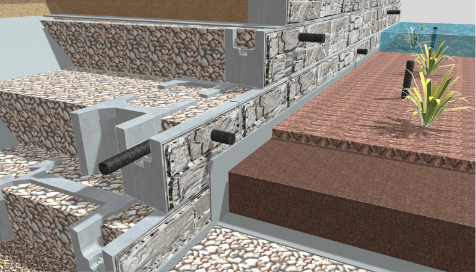
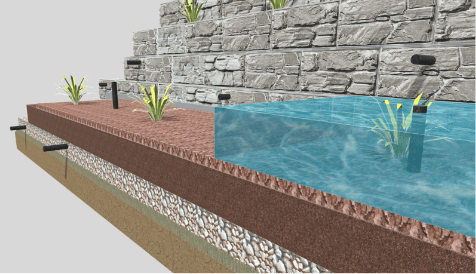
Design Considerations for Dry Pond
(Detention) Retaining Walls
-
High Water Mark – The average maximum height that a body of water is expected to reach during a period of flooding.
-
Low Water Mark – The average low water elevation that stays consistent and is typical throughout the year.
-
Rip Rap – Rip rap should be used along the toe of the walls to slow water flow, protect the wall facing, and to prevent scour. Additional scour analysis and rip rap sizing calculations should be completed separate of the wall design analysis.
-
Soils – A full soils analysis report should be prepared using boring logs to determine the suitability of the site soils. A Geotechnical Engineer should be consulted to perform the analysis and report findings.
-
Drain Gravel – Drain gravel is used in the retained infill zone or reinforced zone when using geogrids. A well draining coarse gravel (often referred to as AASHTO #57 stone) with little to no fines should be used 1 ft (304mm) above the high water mark. This material can be used inside the hollow cores of the retaining wall units and can also be used to backfill behind the wall.
-
Perforated Drainpipe – A perforated drainpipe, also known as a weeping tile, should be used for proper drainage behind the wall face. These pipes typically have a 4” (101mm) diameter and may be sock wrapped. All drainpipes may outlet (daylight) through the wall at a minimum of every 30 ft (9.0 m) on center. The elevation of the first drainpipe should be above the high water mark by a minimum of 6” (152mm). A second drainpipe should be added above the low water mark. Additional back drain(s) may be added where necessary at the discretion of the Design Engineer.
-
Filter Separation Fabric – Filter fabrics, also known as geotextile, should be used to separate the fine soils from the drainage layers. They may also be used between the backfill material and retained material along the excavation cut. Wrapping the leveling pad will assist with scour and erosion of the base leveling pad.
-
TOW – Top of retaining wall elevation. Typically, the top of the cap; shown in plan views and wall profiles and are essential for construction.
-
BOW – Bottom of retaining wall elevation. The base of the wall where the ground level meets the retaining wall; shown in plan views and wall profiles and are essential for construction.
Environmental Benefits of Bioretention Ponds
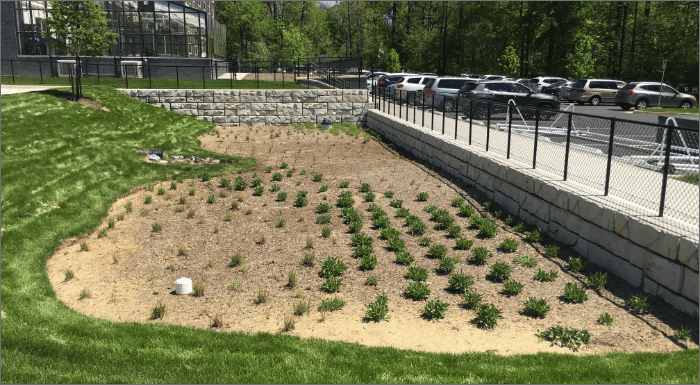
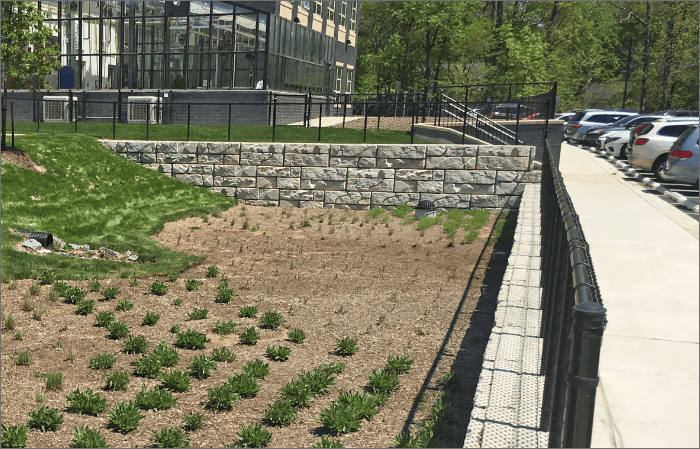
Bioretention ponds are very similar to temporary stormwater management systems, in that they hold water for short amounts of time. With that, these drainage areas are far more complex structures in terms of the inflow and outflow of stormwater runoff and have massive environmental advantages.
The core benefits of bioretention relate to natural stormwater processing practices and water treatment. The removal of pollutants, contaminants and nutrients from surface runoff is a key function performed via bioretention. As water volume accumulates in the shallow bioretention ponds and basins, it simultaneously enters multiple filtration systems below the surface.
The soil media filtration begins with the top layer of mulch, then most applications contain a well draining planting soil and filter fabric. Next comes clean angular gravel with little to no fines and a sand layer below with subsoils lining the foundation zone. Sediments, pollutants and debris are removed from the water and settle within each layer, allowing for the cleaner, treated water to continue moving.
Treated water is then removed in different ways, depending on the bioretention system’s design. Every design and situation are unique and must be treated as such. We recommend speaking with your local environmental engineer or landscape architect for further details prior to installation.
Although many people assume the water removal is accomplished through infiltration to the ground below, that is not always the case. Varying processes include evapotranspiration, underdrains or overflow inlets incorporated into each bioretention system’s unique design.
Proper Drainage & Infiltration Techniques
Many bioretention systems include an underdrain where water is carried and evenly distributed underground to soils further away. Evapotranspiration is another method to remove excess water, by which water evaporates through the native plants along the surface. Others contain overflow inlets, whereby the treated water that accumulates within the containment area rises and is reaches a point where it can be released to travel downstream.
Receiving waters downstream welcome the treated water into rivers, streams and lakes which can be recycled for other uses. Of the stormwater management systems to date, bioretention systems are the most effective and natural ways to treat stormwater runoff.
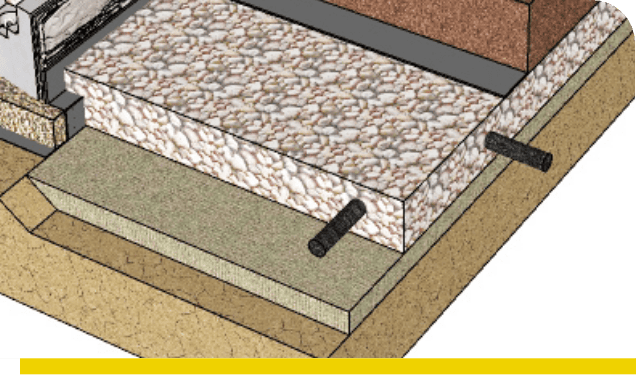
Features of Bioretention Stormwater Storage Systems
From paved or impermeable surfaces, stormwater runoff enters the bioretention ponds via swales and drainpipes that guide water to the system. Frequently located near the base of a retaining wall, rain gardens and bioretention areas often have graded land sloping toward the low-lying containment area.
It is always recommended that the drainage pipes in the retaining wall and clean gravel backfill remain a minimum
of 12 inches (300 mm) above the high water mark for any water application, including bioretention ponds. This area is wrapped in a filter fabric to prevent fines from migrating into the clean drainage areas.
The retaining wall or grassy slope down to the containment area serve to help direct, filter and disperse stormwater evenly into the bioretention pond. The surface layer of the bioretention pond or basin is typically native vegetation that absorbs the water nutrients and mulch as an initial filter for runoff debris. The layers below can include organic soil, sand and an optional underdrain beneath with native subsoil at the bottom for infiltration.
Underdrain systems or overflow inlets and storm drains help remove the filtered, cleaner water. These release points all treated runoff to enter other waterways and be re-used. When dry, bioretention ponds and rain gardens are not typically used as a multifunctional space, due to their marshy or vegetated appearance.
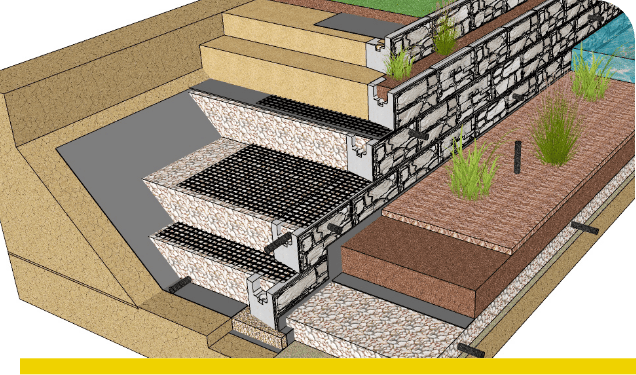
Selecting Native Plants & Grasses
The vegetation plants along the surface of each bioretention system are strategically chosen to recycle nutrients and absorb water. This assists in pollutant removal and the evapotranspiration process to remove water. These native plants also contribute to the local ecosystem, serving as a new habitat for wildlife such as bees and birds.
Deep-rooted plants are best suited for bioretention
ponds and can include trees, shrubs, sedges and herbaceous perennials. The native plants and grasses will vary by region and it’s recommended to consult with local botanists or landscape architects prior to designing bioretention systems.
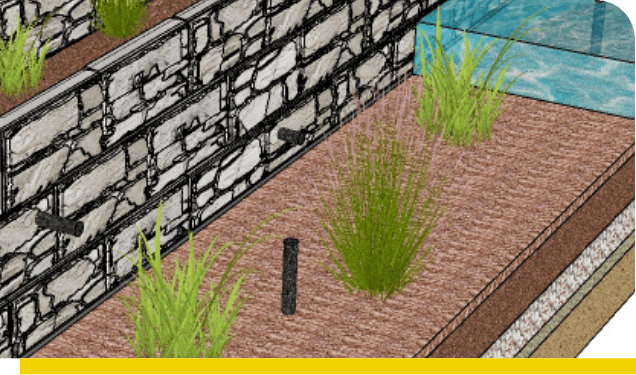
Terraced Retaining Walls for Bioretention Basins
The tiered or terraced retaining walls are a multifaceted design that enhances aesthetics and adds practical eco-friendly purposes to bioretention systems.
MagnumStone’s retaining walls make for excellent planter walls, where plants and shrubs can be added directly into the hollow core design. Planter walls provide visual appeal and help reduce heat island effect by minimizing concrete usage.
These retaining wall designs also serve as a multi-level filtration method for surface runoff while the greenery inside the planter wall absorbs a portion of the water and harmful nutrients. The terraced retaining walls can also catch debris, nutrients and contaminants prior to their arrival at the bioretention pond’s containment area.
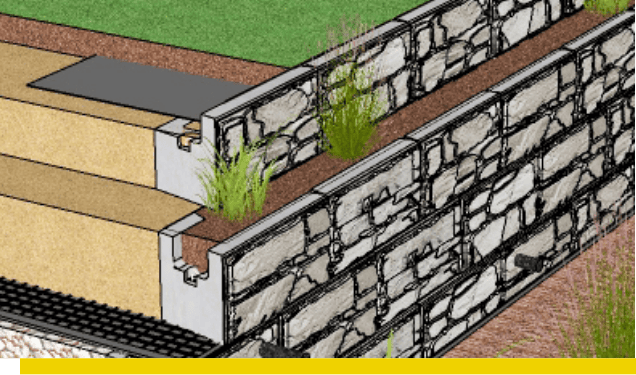
learn more about how we can help you utilize the
MagnumStone advantage!

Gravity Solution
Geogrid Solution
Load times may very depending on internet speed.
DOCUMENTS & DOWNLOADS
All related documents for this design option are listed here, or to view our entire downloads catalog click here
-
Bioretention Ponds Documents
-
Related Design Details
learn more about how we can help you utilize the
MagnumStone advantage!
MagnuMStone Advantages
-
An eco-friendly product, the hollow core design uses 40% less concrete than solid concrete systems
-
MagnumStone units are backfilled with clear crush gravel for exceptional drainage and permeability
-
Free-flowing drainage system built into and behind the blocks, to avoid sediment buildup and blockages
-
Gravel-filled MagnumStone blocks provide weighted strength for gravity walls, or with the help of geogrid for reinforced walls
-
Natural facing rejuvenates and enhances the look of temporary stormwater storage systems
-
MagnumStone’s terraced and planter retaining walls provide environmentally friendly elements and more stylish aesthetics thanks to the block’s hollow core design
-
MagnumStone can either be used for a geogrid reinforced wall or a gravity wall for these simple or complex water applications
-
MagnumStone’s gravity extenders require far less excavation area and maximize land use
-
High-quality precast wet-cast concrete is weather-proof and minimizes water absorption
-
MagnumStone’s strength can withstand high pressures and loads of close-proximity infrastructure (parking lots, roads, railways, buildings, etc.)
-
Perforated drainpipes are strategically placed along the retaining wall to guide water runoff
-
Graded land at toe of the retaining wall diverts water runoff away from the retaining wall and promotes even water dispersion
-
Retaining walls are often embedded above or slightly below the surface of the water
-
Lightweight blocks are quick and easy to install, excellent for tight excavation spaces, making better use of land and properties
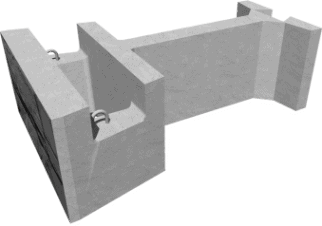
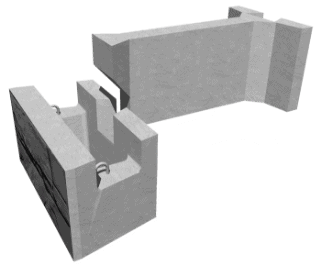

StormWater Case Studies
Every MagnumStone project has a story behind it, not just backfill and drainage channels. Our extensively library of detailed MagnumStone case studies feature impressive versatility and retaining wall successes.

